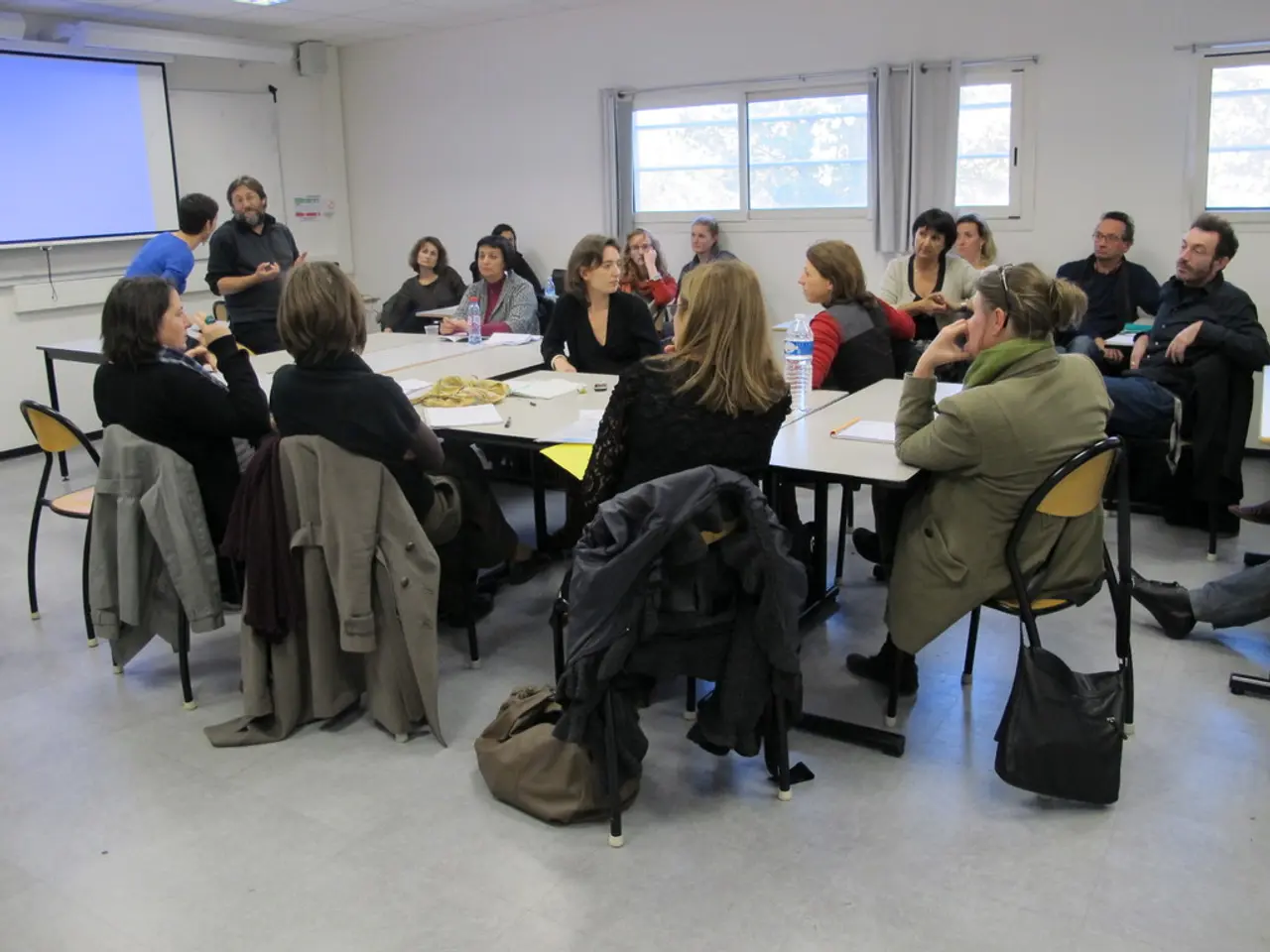Bridging the Generational Divide: Exploring the Influence of Communication on Interpersonal Connections across Age Spectrums
In today's diverse world, fostering strong relationships across generations is more important than ever. To achieve this, it's crucial to understand and respect generational differences, practice active listening and empathy, use clear and simple language, and be mindful of power dynamics.
For young adults, discussions about expectations and boundaries in friendships and romantic partnerships are essential. Prioritizing in-person conversations can enhance emotional connections, as consistent and honest communication builds trust, which is foundational for strong relationships.
As we move into middle age, managing busy schedules becomes a challenge. However, setting aside dedicated time for meaningful conversations with family members is crucial. Miscommunication with parents or authority figures can result in misunderstandings, potentially damaging relationships.
Seniors may face communication difficulties due to hearing issues or reduced social interactions, leading to feelings of isolation, loneliness, and depression. Speaking clearly, facing the person while talking, minimizing background noise, and considering written communication when necessary are strategies for communicating effectively with seniors. Utilizing technology, such as video calls and social media, can help seniors stay connected.
Inclusive communication is crucial for seniors, with family members being patient and attentive to ensure seniors feel heard and valued. Bridging the communication gap between generations requires teaching and learning, creating hybrid communication methods, and fostering empathy. Technology can enhance intergenerational communication by facilitating connections through video calls, social media, and messaging apps.
In multigenerational teams or relationships, tailoring communication methods to accommodate different preferences and proficiencies is key. Offering training for less tech-savvy individuals and encouraging reverse mentoring, where younger people share technological skills with older generations, can help.
Communication allows individuals to express love, appreciation, and concerns, fostering emotional intimacy. Sharing stories and experiences through conversation strengthens bonds and helps individuals feel connected. Non-verbal communication, such as body language and facial expressions, plays a critical role in effective communication.
In childhood, communication is a critical skill that develops rapidly, with children learning to express their needs and feelings through simple words and gestures. As children grow into adolescents, their communication becomes more complex, involving deeper emotional expression and the need for independence.
Open dialogue is essential for addressing misunderstandings and resolving conflicts in a constructive manner. In middle age, individuals often juggle work, family, and social obligations, making effective communication essential for managing relationships with partners, children, and aging parents. Establishing regular family meetings, encouraging honesty without judgment, and making time for shared activities that promote bonding and dialogue can create a culture of open communication.
Children and teens often struggle with articulating emotions, leading to frustration or behavioural issues. Active listening, creating a safe space for discussions, and being patient are effective ways to improve communication with this age group.
By employing emotional intelligence—such as self-awareness, empathy, and conflict management—we can overcome communication challenges and create authentic connections. Together, these approaches address the challenges of generational differences, leverage diverse strengths, and foster collaborative relationships that overcome communication barriers.
[1] Intergenerational Communication: Bridging the Gap (2020) [2] The Role of Technology in Intergenerational Communication (2019) [3] Effective Communication Strategies Across Generations (2021) [4] The Power of Emotional Intelligence in Intergenerational Communication (2020)
Fostering intergenerational relationships involves adopting hybrid communication methods that cater to various preferences and proficiencies in a multigenerational team or family. [3] Technology can be utilized to facilitate connections through video calls, social media, and messaging apps. [2]
Understanding and respecting generational differences is vital in fostering strong relationships within a family. [1] This includes being mindful of family-dynamics and adapting communication styles accordingly.
Incorporating education and self-development, such as understanding emotional intelligence, can help in overcoming communication challenges across generations. [4] Building empathy, fostering open dialogue, and implementing active listening are effective strategies for building stronger relationships within a family.
To maintain strong relationships, seniors need to feel heard and valued. [1] Speaking clearly, facing the person while talking, minimizing background noise, and considering written communication when necessary are strategies for communicating effectively with them. [2] Maintaining emotional health through personal growth and healthy lifestyle choices can enhance the quality of relationships in senior years. [1]




